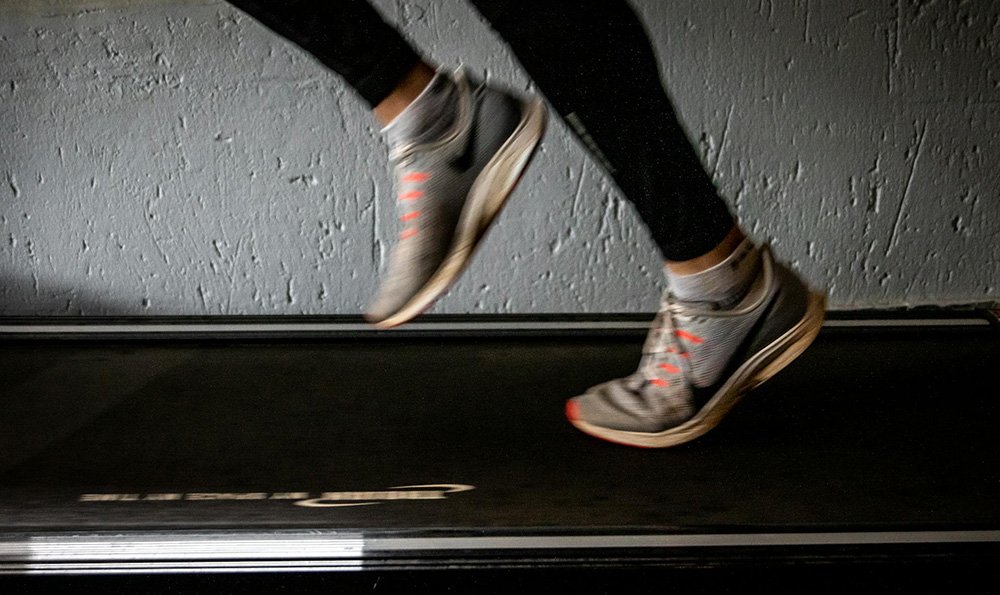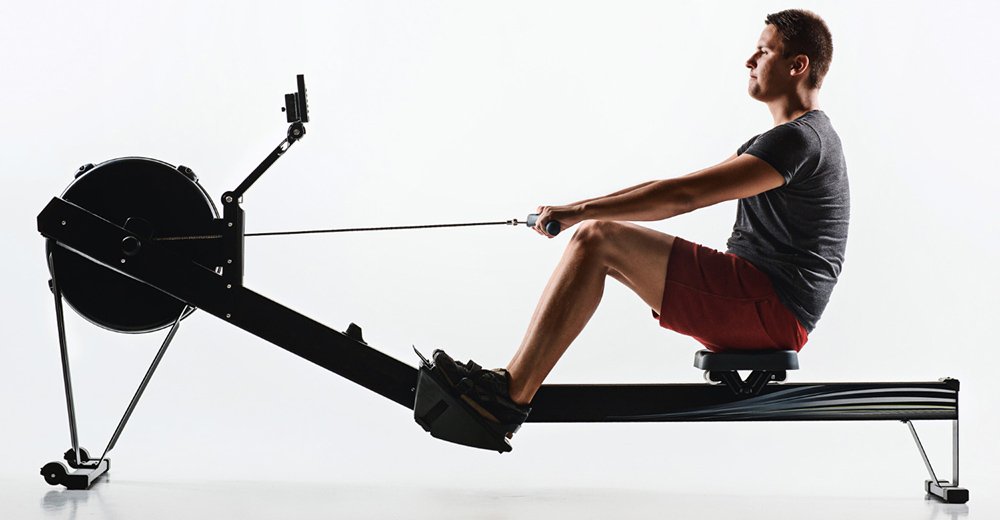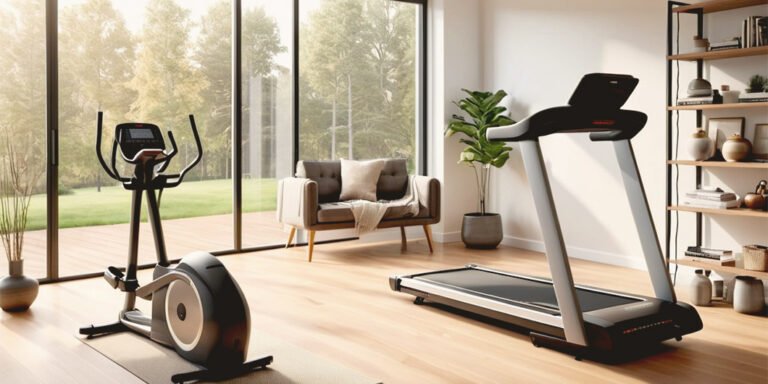
As part of the home gym configuration, the cost of cardio machines (e.g. treadmills, ellipticals, or rowing machines) usually is most heavily discriminated against. But what about the long-term expenses, like electricity consumption? Being aware of the energy consumption of your cardio equipment can help you optimize your fitness and purse choices. In this guide, we’ll break down the energy costs of popular electric cardio machines and explore ways to save energy while staying fit.
Energy Consumption Comparisons: An Overview of the Energy Cost of Electronic Cardio Equipment
Table of Contents
ToggleNew Posts
Energy-Efficient Cardio: Comparing Long-Term Costs of Electric Gym Equipment
Despite being a good choice for workouts, cardio equipment is a top contender for the most power-hungry gym equipment. No matter is it a treadmill or elliptical, there is an energy cost. Over time, the electricity costs can add up, especially if you’re using your equipment daily.
For example, the power consumption of a treadmill can vary greatly depending on model and use. Energy-hungry treadmills equipped with strong motors, such as those used for high-end treadmills, can consume as high as 800 Watts during its operation, whereas low-advanced treadmills can consume as little as 400 Watts. In contrast, elliptical trainers can dispense more energy (i.e., rarely more than ~150-250 Watts), offering a more cost-effective option for sustained exercise.
Learning about these distinctions is important for trade‐off between fitness goals and energy expenditure. Slight decisions like opting for energy-hungry device or reducing energy usage during peak hours of electricity supply can add up to considerable savings in long-term.
Treadmill vs. Elliptical: Which Consumes Less Power Over Time?
Regarding electricity consumption differences between treadmills and ellipticals, ellipticals are relatively higher. Treads are driven by an electric motor to which the carriage belt is attached and the model consumption is linearly dependent on belt speed and gradient. For example, the treadmill running at high speed can reach more than 700 Watts, whereas the walking at moderately speed may be as low as 200–400 Watts.
Due to the architecture of elliptical, where a motor is used as little as possible, user-assisted anthropometric movement is dominant and a motor is usually minimal. They are usually using less than 250 Watts, even with high resistance. This difference in price over a whole year can translate into good monetary savings on your electricity bills.
However, it is important to consider your fitness goals. While ellipticals may be efficient use of energy, treadmills provide a higher intensity cardio exercise. When a treadmill is used as your main form of exercise, it still may be worth the cost in energy expended.
Pro Tip: If you want to balance energy savings and fitness intensity, try alternating between a treadmill and an elliptical. Use the treadmill for high-intensity interval training, then switch to the elliptical for longer, low-energy workouts. This strategy can help you reach your objectives while lowering your electricity expenses.
Hidden Energy Costs: The True Price of Your Cardio Workout
Power drawn by an operation of a cardio machine is not limited to watts drawn during operation. Hidden factors can also drive up your electricity bill. For example:
- Standby Power: There are still many machines that waste power when they are not working. Standby modes can add up over time, particularly for treadmills with large consoles.
- Frequency of Use: A treadmill used daily in an hour-long running regime will consume more energy than one rarely used.
- Maintenance: Defective machines typically lose efficiency and need more power to run.
The ability to track these hidden costs can provide insight into the total energy cost of performing home workouts and where you may be able to decrease energy use.
Eco-Friendly Fitness: Low-Energy Cardio Machines for Sustainable Home Gyms
There are various ways for environmentally minded exercise buffs to lower their energy consumption. Manual treadmills, air bikes, water rowers — low-energy exercise machines do deal with the need of power.
Manual treadmills are powered entirely by your movement, making them an excellent choice for sustainable home gyms. Similarly, air bikes generate resistance through the use of a fan and provide 0 electricity consumption. While these machines may lack the advanced features of electric models, they’re perfect for environmentally friendly workouts.
Some types of electric cardio machines have been fitted with environmentally friendly components like energy-efficient motors, or self-powered control consoles that generate electrical energy concerning the level of exertion. Investing in this technology is not just a way of reducing the environmental footprint but will also lead to the cost reduction of electricity.
Calculating Kilowatt-Hours: Understanding Your Cardio Machine’s Electricity Usage
To determine the real cost of running a cardio machine, the prediction of the amount of kiloWatts-hours (kWh) it consumes is necessary. Here’s a simple formula to help:
- List the power output capacity of the machine (e.g., a treadmill at 600 Watts).
- Multiply the power by the number of hours of use per day (e.g., 600 Watts x 1 h =600 Watt-h).
- Divide by 1,000 to get in kilowatt-hours (600 Watt-hours 1,000 0.60 kWh).
- Multiply by your electricity price (e.g., 0.6 kWh x $0.16 per hour).
By calculating the kWh, you can estimate your monthly and yearly costs based on your usage habits. This realization allows you to choose whether and how to use your equipment.
Let’s say you are using your treadmill approximately 4 hours per week. Now let’s calculate your treadmill average annual electricity consumption price:
600 W x 4 h = 2400 Watt-hour.
That is 2.4 kWh electricity consumption per week.
Now let’s multiply this by 52 weeks to get an annual energy consumption:
2.4 kWh x 52 weeks = 124.8 kWh
And finally to find out the price for annual electricity consumption, let’s multiply by an average kWh price (average price in January 2025 – $0.1654 per kWh):
124.8 kWh x $0.17 = $21.22 per year

Budget-Friendly Cardio: How Energy Costs Impact Your Fitness Investment
When planning a home gym, do not take into consideration only the cost of purchasing, but also the cost of the energy consumption of equipment. A high energy treadmill may appear initially economical but operational expenses can lead to higher costs in the long run when compared to an energy efficient elliptical or rowing machine.
If you have limited budget, consider these tips:
- Choose Energy-Efficient Machines: Identify the models with energy-saving capabilities or decreased power consumption.
- Reduce Usage During Peak Hours: Utilities often have a practice of charging more for power generated during the peak hours, so please try to fit workouts after the peak hours.
- Unplug When Not in Use: Turning off machines completely can eliminate standby power consumption.
Energy usage vs fitness goals means that you’ll get the best value for your money.
Green Exercise: Energy-Saving Features in Modern Cardio Equipment
Modern cardio machines are increasingly built to be energy efficient. Many treadmills and ellipticals now come with:
- Eco-Modes: Configuration parameters that reduce the power levels by dimming the displays or by changing the resistances.
- Self-Powered Consoles: There are some machines that, during exercise, produce their power that can be used independently to display and operate the machine itself, without necessarily using external power.
- Automatic Shutdown: Devices which cut off use after a period of inactivity.
Not only do these features make the environment a win, but they also result in cost savings in the long run. When purchasing new equipment, look for equipment with the following eco-friendly features.
Watts Up? Comparing Power Consumption Across Popular Cardio Machines
Different cardio machines have varying energy demands. Here’s a quick comparison:
- Treadmills: 200-700+ Watts depending on speed and incline.
- Ellipticals: 150-250 Watts on average.
- Stationary Bikes: 50-150 Watts, thus one of the most power-saving.
- Rowing Machines: 100-150 Watts and some air models are electrically-free and some are power-free.
If you are aware of these differences, then it may help you choose a machine which suits your cost reducing and exercise based requirements.
The Energy-Efficiency Spectrum: From Rowing Machines to Stationary Bikes
On the axis of energy-efficiency score, the champion is the rowing machine or the stationary bike as soon as it hits the starting line. Such machines require mostly no electricity, which suits home gyms such environments compatible with low-cost and eco-friendly lifestyle. The case of not using any electricity in a manual rowing machine when a full-body exercise, or not using any much energy when using a stationary bike at high resistance levels, etc.
On the other hand, high-performance treadmills and comfortable ellipticals might be able to provide additional features but it would be energy-intensive. By understanding this range, you can then go on to decide which equipment you will need to achieve your fitness goals and budget levels.
Long-Term Savings: Energy-Efficient Cardio Machines That Won’t Break the Bank
The upfront cost of purchasing energy-efficient cardio machines may be higher, but the payback is possible through lower power bills long term. Find devices with energy ratings, eco modes or low-power implementations. However, over time these small purchases can lead to substantial cost reductions in total fitness costs.
For instance, selecting a low-wattage elliptical rather than a high-wattage treadmill to save hundreds of dollars of net lifetime energy consumption cost. Furthermore, energy-saving machines are also typically provided with extended warranties and more robust construction which translates into better value in the long run.
Smart Cardio: How Energy-Saving Technologies Reduce Running Costs
The recent improvements in cardio equipment technology are resulting that energy costs can be significantly minimized. In the case of smart treadmills, for instance, sensors track the current usage depending on walking velocity and walking weight. Others include embedded applications, to measure and report on energy consumption as well as suggest effective exercises.
These new technologies not only save you money, but also improve your training experience. By selecting smart, energy-efficient cardio equipment, you are investing in a solution that’s better for your health, wallet, and the environment.
With this knowledge regarding electricity consumption of cardio equipment, you can design a home gym that is both productive and energy efficient. Whether you’re focused on minimizing costs, reducing your environmental impact, or maximizing performance, there’s a solution for every fitness enthusiast.
New Posts
Related Posts
KEEP IN TOUCH.
SUBSCRIBE TO GET
THE LATEST
NEWS & UPDATES

















